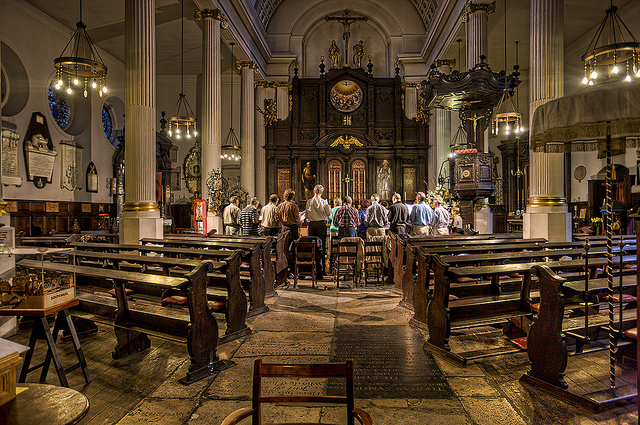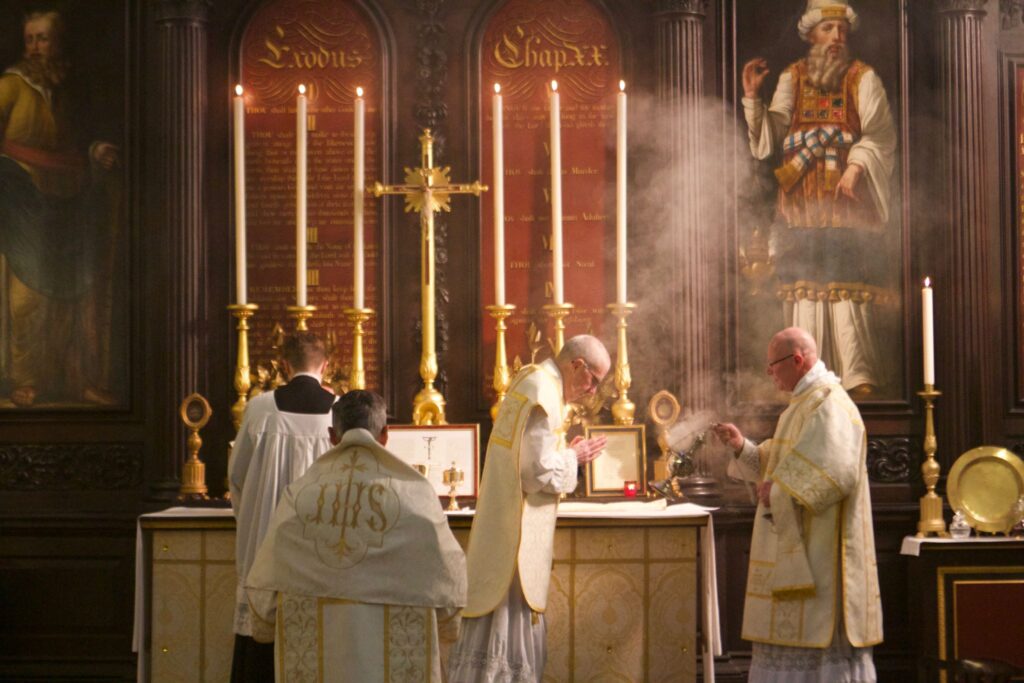
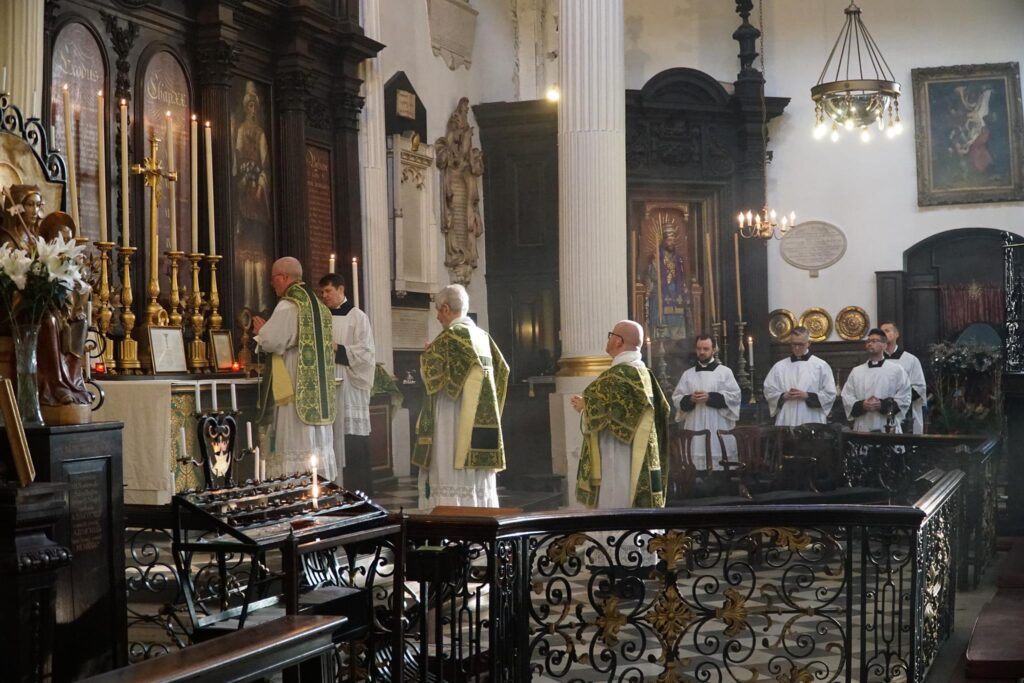
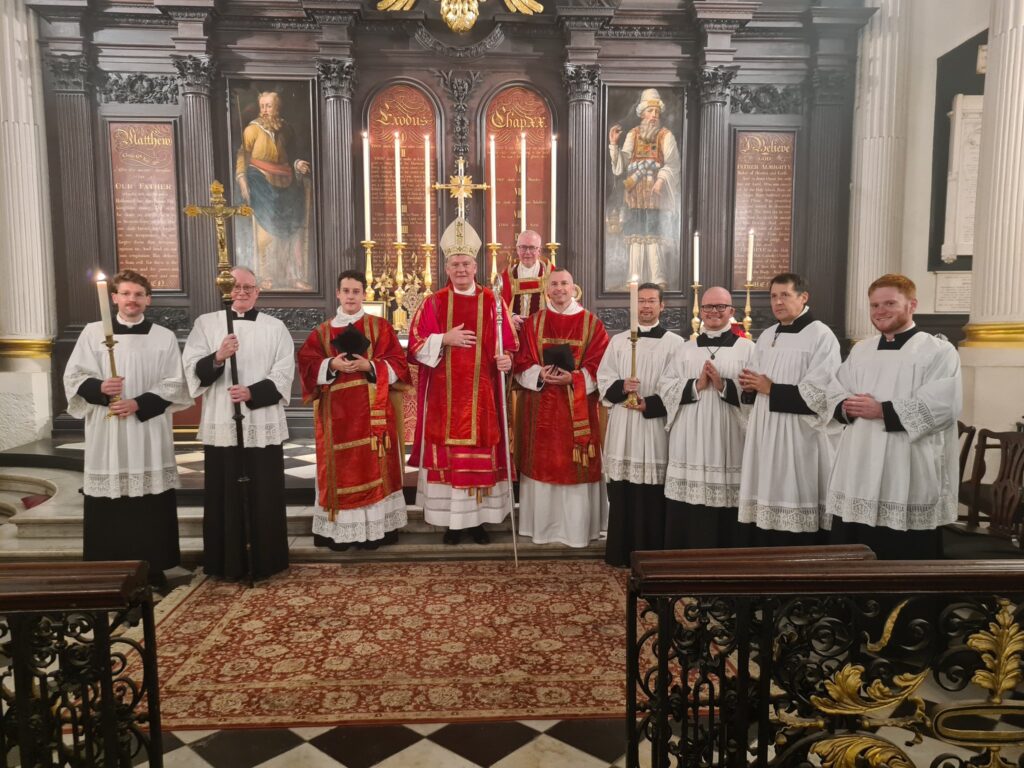
In 1924 Martin Travers restored the 17th-century High Altar reredos, including the paintings of Moses and Aaron, and reconstructed its upper storey, which had been mutilated when the east window was inserted in 1825. Above the reredos Travers added a painted and gilded rood, together with flaming urns. In the centre of the reredos there is a carved gilded ‘Pelican in her Piety’ (an early Christian symbol of self-sacrifice), an open Bible bearing the inscription “St John Chap. VIII v32” (“And ye shall know the truth, and the truth shall make you free”), and a Baroque-style ‘Glory’ in the form of a roundel with nimbus and dove descending, attended by cherubim. The glazed east window, which can be seen in early photographs of the church, was filled in at this time. A new altar with six tall candle sticks, crucifix and console tables was installed and the communion rails moved outwards to extend the size of the sanctuary, which was originally the size of the top step.
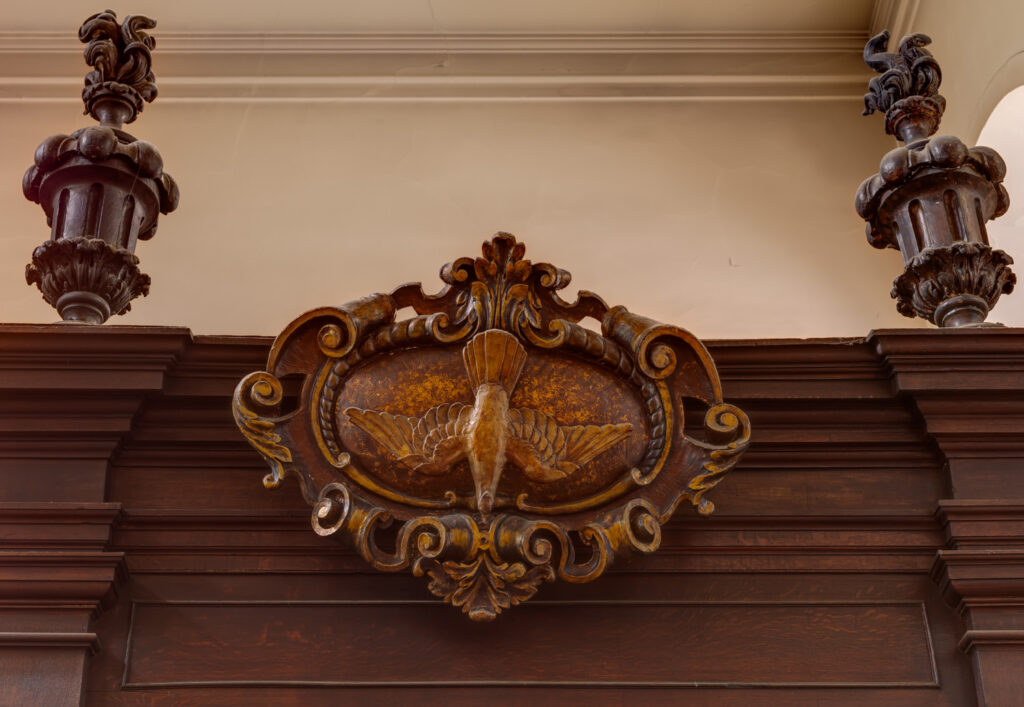
A cartouche of the Holy Spirit as a descending dove was initially placed under the rood, but this now hangs over the sacristy doors at the west end of the north aisle.
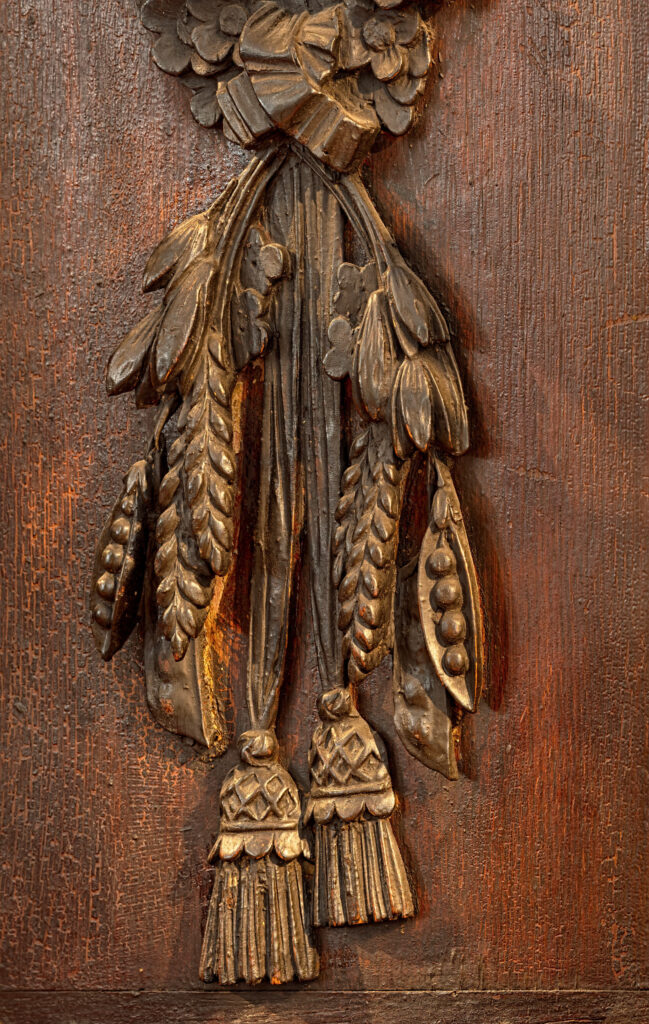
The reredos, dating from the 1680s and attributed (albeit without great certainty) to Grinling Gibbons, is of oak and occupies the full width of the santuary. The lower storey is divided into bays by four attached fluted Corinthian columns with pilasters at either end, which stand on pedestals connected by a panelled dado, and support an entablature with segmental pediment over the middle bay. The Lord’s Prayer and Creed are displayed in the outer bays and the Decalogue (Ten Commandments) in the central bay, which is divided into two round-headed panels separated by a festoon. There are carved panels in the lower part of each bay. The upper storey (attic) comprises three panels between carved pilasters, with a pediment in the centre and, at each end, a carved figure of a seated angel holding a palm branch.
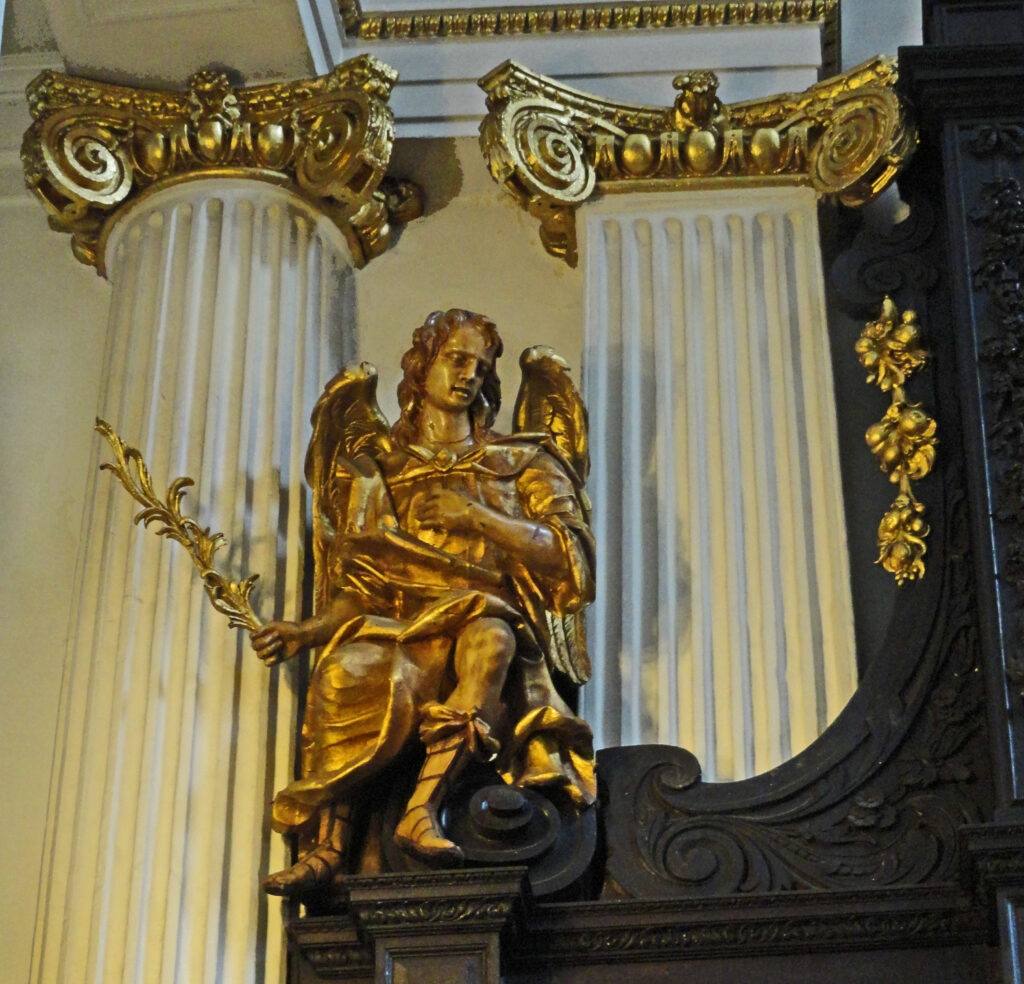
Gibbons was assisted by a large body of able craftsmen and women. In the records of St Magnus there is a reference to “Widow Pearce, painter”. ‘Widow Pearce’ was Margaret Pearce, who was contracted to do painting at several City churches.
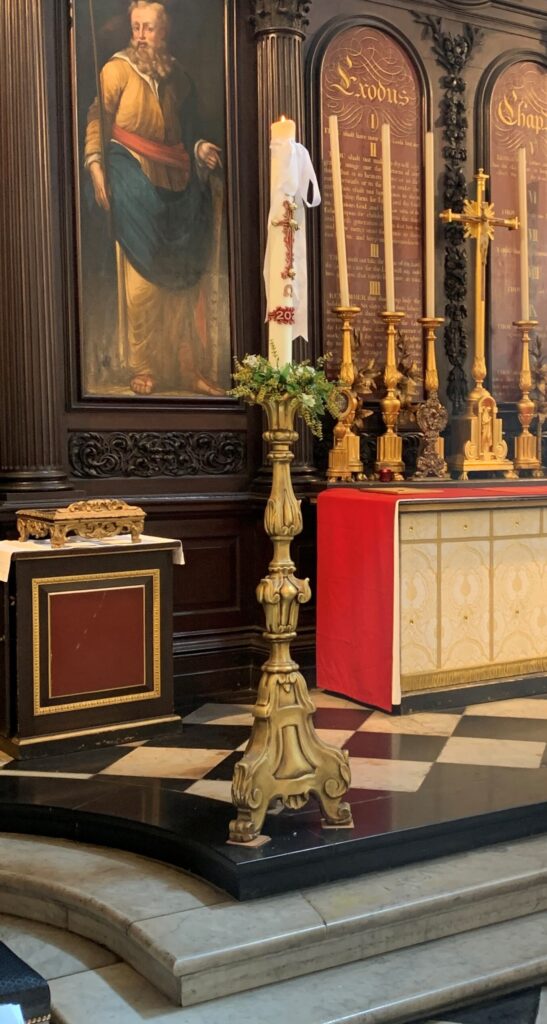
The Rector from 1662 to 1711, after the ejection of the congregationalist minister Joseph Caryl, was the Revd Robert Ivory (chaplain to the royalist Sir Thomas Ingram and Frances, Lady Ingram, daughter of the recusant Viscount Fauconberg). The baroque reredos exemplifies late Stuart High Church eucharistic theology, based on the ‘Laudian’ reformed Catholic tradition and the sacramental theology of Anglican Caroline Divines such as Lancelot Andrewes, which so inspired T.S. Eliot. Indeed, it has been suggested that Wren, being the son and nephew of distinguished Laudian churchmen, sought to impose a common pattern for furnishings in the City churches:
The detailed accounts approved by the Commission [for rebuilding the City churches] indicate that the arrangements at the east end of each church followed a standardised format: the communion table was to stand on a black and white marble floor, resting on a black marble step, sometimes with a second plain step; the shallow depth of these ascents meant that the table could only be placed on them altarwise not tablewise. All were also railed, and most backed by an altarpiece, which usually contained the ten commandments, creed and Lord’s prayer, and sometimes paintings of Moses and Aaron.
‘According to Ancient Custom’: The Return of Altars in the Restoration Church of England: Kenneth Fincham
The 1603 Canons of the Church of England (Canon 82: A decent Communion-table in every Church) required “that the Ten Commandments be set up on the east end of every Church and Chapel, where the people may best see and read the same, and other chosen sentences written upon the walls of the said churches and chapels”. After the Restoration, however, the altarpiece became much more elaborate, the Decalogue being flanked by panels with the Apostles’ Creed and the Lord’s Prayer, and additional decorations. Contemporary preachers stressed the Hebrew concept of the Shechinah, God’s presence and glory in places of worship. This is a similar concept to that expressed in Matthew 18:20: “For where two or three are gathered together in my name, there am I in the midst of them”; developed further in the Prayer of St. John Chrysostom, which was included at the end of Mattins and Evensong in the 1662 Book of Common Prayer: “Almighty God, who … dost promise, that when two or three are gathered together in thy Name thou wilt grant their requests”.
